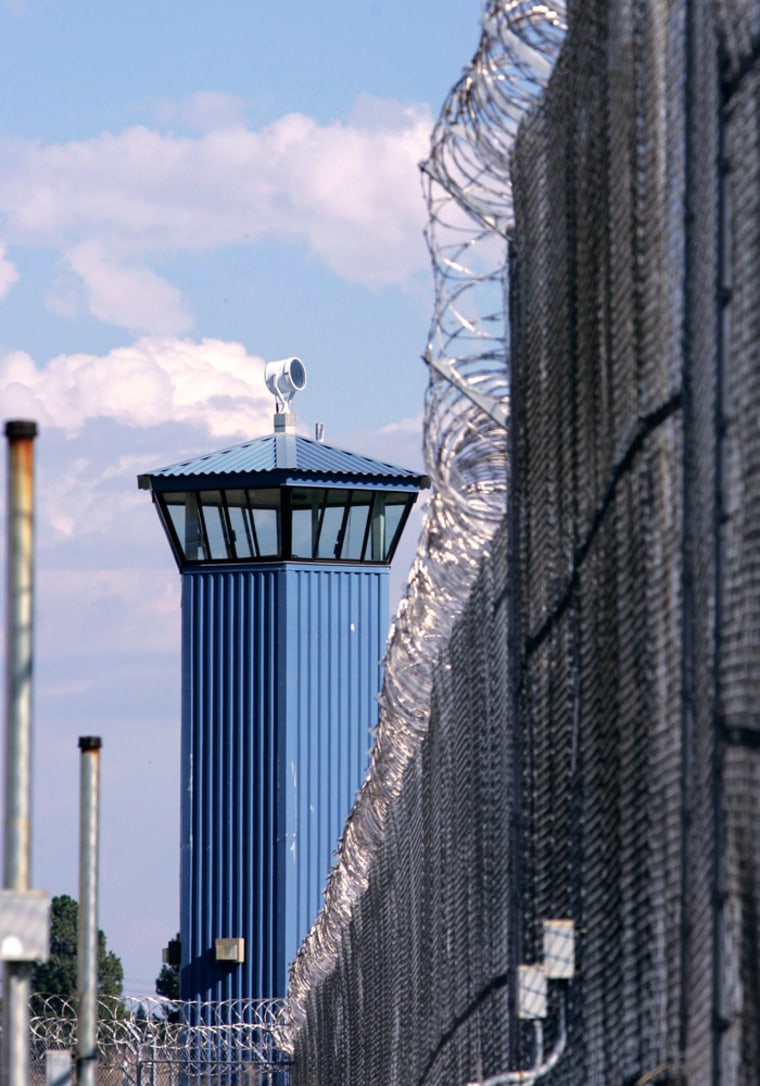A federal judicial panel on Tuesday ordered California to reduce its prison population by 40,000 to improve treatment of ailing and mentally ill inmates, saying there is no other way to bring the system's medical care up to adequate standards.
"California's prisons are bursting at the seams and are impossible to manage," the judges wrote.
The special three-judge panel gave the state 45 days to develop a plan to reduce the number of inmates in the 33 adult prisons from about 150,000 to 110,000 over two years.
About 8,000 additional inmates have been sent to prisons in other states, while nearly 10,000 more are in conservation camps and community correctional facilities.
Judges said the billions of dollars the state has spent on prisons has not kept inmates from dying regularly from suicides or medical neglect.
Care violated inmates' rights
Federal courts previously found the level of care was so poor that it violated inmates' constitutional rights. Conditions remain so cramped that they are leading to increased violence and speed the transmission of infectious diseases, the judges said.
"The medical and mental health care available to inmates in the California prison system is woefully and constitutionally inadequate, and has been for more than a decade," the judges wrote in their 184-page order.
Tuesday's action formalized a tentative ruling by the panel in February and follows a federal court hearing that ended in January.
The Schwarzenegger administration will appeal but may need to wait until the judges enter a final order, said Corrections Secretary Matthew Cate.
Cate called the order a dangerous precedent that oversteps the judges' authority. Though he agreed prisons are overcrowded, he said conditions have greatly improved in recent years.
"It's something that the state should do itself, as far as fix our problems," Cate said. "I think we're doing that."
Republican legislators also have promised a separate appeal. Under a 1996 federal law that restricts judges' actions in inmate rights cases, appeals will go straight to the U.S. Supreme Court.
Prisons designed for only 80,000 inmates
California's prisons were designed to house about 80,000 inmates, according to the California Department of Corrections and Rehabilitation, but hold almost double that amount today.
In its order, the three-judge panel allowed the prison system to remain overcrowded, but to a lesser degree. It will allow the system to run at 137 percent of capacity, housing roughly 110,000 inmates.
Donald Specter, director of a nonprofit that had sued the state on inmates' behalf, called the order historic.
"In this landmark case, the court is requiring the state to run its prison system with a population that it can safely manage, both for the prisoners and the staff," said Specter, director of the Berkeley-based Prison Law Center.
The judges said California can safely cut its inmate population without releasing inmates early through steps like giving them credit for completing rehabilitation programs and not sending parolees back to prison for technical parole violations. Experts hired by the corrections department have made similar recommendations for years.
Savings needed to help close deficit
Schwarzenegger has proposed those steps and more in asking state lawmakers to reduce the population of the nation's largest state prison system by 27,000 inmates to save $1.2 billion. The state is counting on the savings to help close a $26.3 billion deficit in a revised budget Schwarzenegger signed last week. Legislators are to consider the plan when they return from summer vacation in two weeks.
Cate, the corrections secretary, said the governors' proposals could reduce the prisons population by as much as 37,000 over two years.
The administration also wants to build new prisons to hold up to 10,000 inmates, though Cate said construction probably can't be completed in two years. In the interim, he said California could seek to temporarily house more inmates in other states.
Attorney General Jerry Brown said the state is spending an average of nearly $14,000 a year per inmate on medical care.
"That's the highest spending on inmates in any prisons in the world. To say that's not enough, I do not think the United States Supreme Court would come to that conclusion," said Brown, who is considering a run for governor next year.
